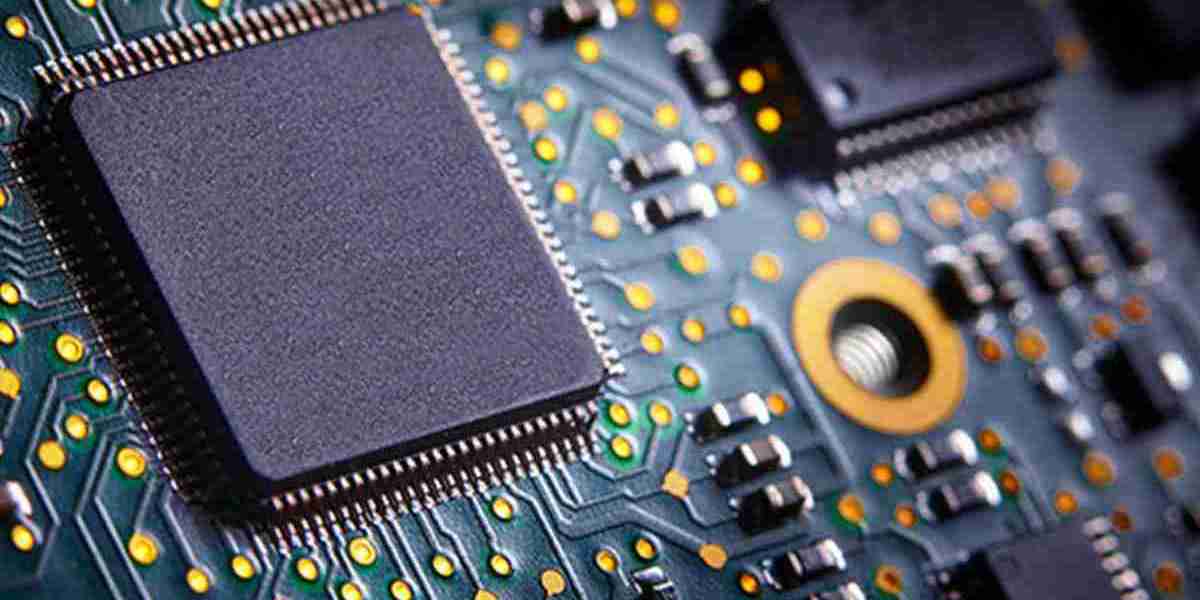The compound semiconductor market developments over recent years have been pivotal in transforming the landscape of electronics and advanced technology industries. Compound semiconductors, made from combinations of elements like gallium arsenide (GaAs), gallium nitride (GaN), silicon carbide (SiC), and indium phosphide (InP), possess superior electrical, thermal, and optical properties compared to traditional silicon semiconductors. These characteristics have enabled them to meet the demands of emerging high-performance applications that require faster speeds, greater power efficiency, and enhanced durability.
As a result, recent developments in this market are not only fostering innovation but also expanding the adoption of compound semiconductors across multiple sectors, including telecommunications, automotive, aerospace, renewable energy, and consumer electronics.
Advances in Material Science and Manufacturing Processes
One of the most significant developments in the compound semiconductor market is the advancement in material science. Researchers and manufacturers have made considerable progress in improving the quality and purity of semiconductor materials. New crystal growth techniques, such as hydride vapor phase epitaxy (HVPE) and molecular beam epitaxy (MBE), allow for more precise control over wafer thickness and defect reduction.
These improvements have resulted in higher device performance and longer lifespans. The refinement of silicon carbide and gallium nitride wafers, in particular, has enabled their widespread use in power electronics where high voltage and temperature resilience are critical. These developments also reduce manufacturing costs, making compound semiconductors more competitive against silicon alternatives.
Expansion of Applications in 5G and Telecommunications
The global deployment of 5G technology has been a key driver in recent compound semiconductor market developments. GaN and GaAs devices are critical in the production of RF components used in 5G base stations and mobile devices. These semiconductors support higher frequency bands and improved power efficiency, which are essential for the enhanced data speeds and connectivity promised by 5G networks.
Manufacturers are developing smaller, more efficient RF modules integrating compound semiconductor materials to meet the demands of compact and high-performance devices. These innovations allow telecom operators to expand coverage, increase network reliability, and reduce energy consumption, directly impacting the market’s growth.
Growth in Electric Vehicle (EV) and Power Electronics Sectors
Developments in the automotive industry, particularly the surge in electric vehicle production, have significantly influenced the compound semiconductor market. Silicon carbide and gallium nitride power devices are increasingly used in EV inverters, chargers, and battery management systems to boost efficiency and reduce power loss.
New developments focus on scaling up production capabilities and improving the reliability of SiC and GaN components to meet automotive standards. These advancements support longer driving ranges, faster charging times, and overall better vehicle performance. Furthermore, power electronics for renewable energy installations, including solar and wind power converters, are benefiting from the enhanced capabilities of compound semiconductors, reinforcing their market relevance.
Integration with Photonics and Optoelectronics
Photonics and optoelectronics represent rapidly evolving fields benefiting from recent compound semiconductor developments. Indium phosphide and gallium arsenide materials are integral to lasers, LEDs, photodetectors, and optical communication devices. Innovations in compound semiconductor photonics are enabling higher data transmission rates and improved signal quality, which are crucial for modern data centers and broadband networks.
Efforts to miniaturize photonic components and improve integration with electronic circuits are advancing. This integration allows for more efficient and compact devices, expanding the market potential in areas such as sensing, imaging, and medical diagnostics.
Strategic Collaborations and Industry Investments
Market developments are also shaped by strategic collaborations and significant investments by key industry players. Semiconductor manufacturers, research institutes, and equipment suppliers are joining forces to accelerate innovation and address production challenges. These partnerships facilitate the sharing of knowledge, reduce time-to-market for new technologies, and enhance production scalability.
Governments worldwide are supporting these efforts through funding programs and policies aimed at boosting domestic semiconductor manufacturing. This trend is helping mitigate risks related to supply chain disruptions and geopolitical tensions, which have historically impacted the availability of critical raw materials and components.
Emerging Technologies and Future Opportunities
Compound semiconductor market developments are closely linked to emerging technologies such as quantum computing, advanced sensor systems, and next-generation communication protocols. These applications demand semiconductors with exceptional performance in terms of speed, power efficiency, and thermal management.
Recent breakthroughs in materials research are enabling the creation of novel compound semiconductor structures and hybrid devices that promise to unlock new functionalities. As these technologies mature, they will open fresh avenues for market growth and diversification.
Environmental and Sustainability Initiatives
Sustainability considerations are increasingly influencing compound semiconductor developments. These materials contribute to energy savings by improving device efficiency and enabling cleaner technologies like electric vehicles and renewable energy systems.
Manufacturers are focusing on reducing the environmental impact of semiconductor production by optimizing processes, recycling materials, and adopting greener manufacturing practices. This commitment aligns with global efforts to reduce carbon footprints and promotes the compound semiconductor market as a key enabler of sustainable technological progress.
In conclusion, the compound semiconductor market developments encompass a wide array of technological breakthroughs, expanding applications, and strategic initiatives that are driving significant industry growth. With continuous innovation in materials, manufacturing, and device integration, compound semiconductors are positioned to play a crucial role in the future of electronics, energy, and communication technologies worldwide.




